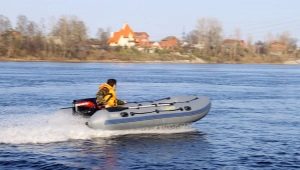Keel on a PVC boat: features and subtleties of manufacturing
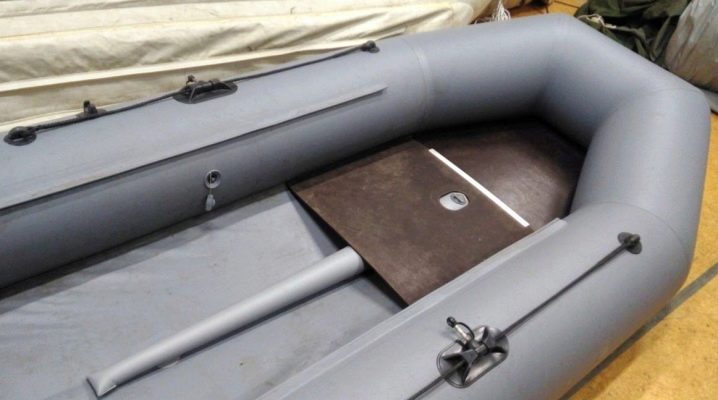
You can improve the characteristics of an inflatable boat made of PVC by making a keel yourself. To do this, it is important to understand the technical side of the matter and strictly follow the recommendations of experts - this will help improve the vessel and make it comfortable to use.
Keel - what is it?
The keel on a PVC boat is considered to be an inflatable compartment, which is a flattened pipe made of boat fabric with a valve. Thanks to its triangular shape from bow to stern, driving stability and maneuverability in waves are increased. When the engine is running, this device prevents the front of the boat from lifting off the water.
PVC is a high-strength fabric that is resistant to mechanical stress. Using the same durable fabric, the keel can be made by hand.
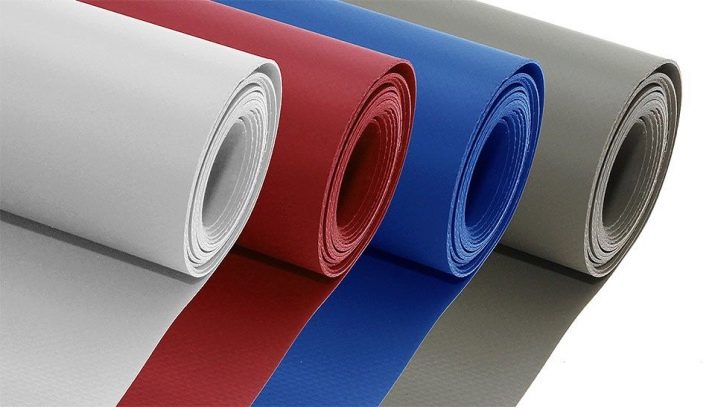
Why is it needed?
The device performs several functions, which are at the same time the advantages of the part:
- the bottom with a keel helps to keep the boat on the water and improves its glide due to the speed of the water pressure;
- stability of movement at high speed is ensured;
- the vessel becomes mobile - when turning, oncoming flows do not rock it, and the use of the boat becomes safe for humans.


Also, the advantages of a plastic keel are the following indicators:
- its immunity to the effects of the sun, water;
- no toxic emissions.
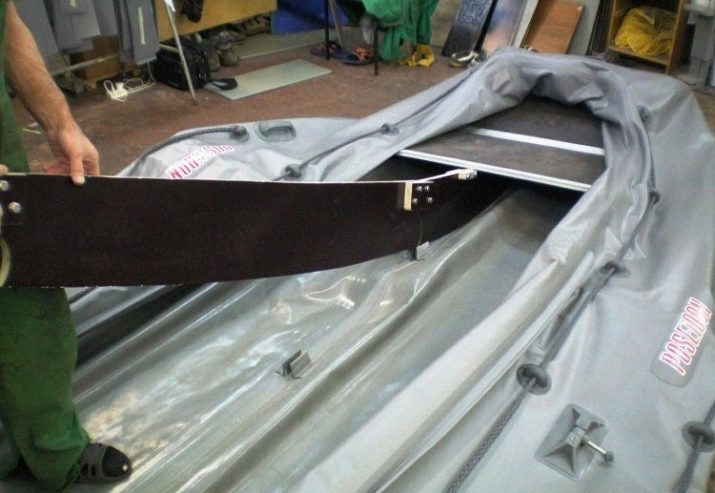
There are also disadvantages:
- the balloon is not always located in the center of the vessel, due to which the stability may change;
- there is a need to pump a weakened kilson so that the bottom fabric does not wrinkle (at the same time, the boat “buries” into the water);
- with an inflatable keel on the waves, you need to constantly control with the rudder;
- in addition, a boat with a keel takes up more space and is heavier in weight.
In general, the modernization of a fishing tool is needed when it is necessary to improve some parameters and make the boat easy to use. However, its individual elements can have a high cost, so it is not profitable to purchase them.

Technical requirements
The keel is necessary to sail safely over long distances, especially if the boat provides for a certain load, such as caught fish. If the boat is large (more than 3 m in length), then it is best to make an inflatable keel, which will help to control the vehicle even at high speed.
But you need to install it in accordance with the technical requirements:
- use is possible in the presence of a motor, the power of which can vary from 5 to 30 liters. With.;
- an inflatable keel on a PVC boat requires a solid deck surface that provides support - only this ensures the stability of the vessel;
- the keel must be placed inside the boat, and its main and end seams are securely sealed (for this, the pipe is rinsed with a mustard solution).
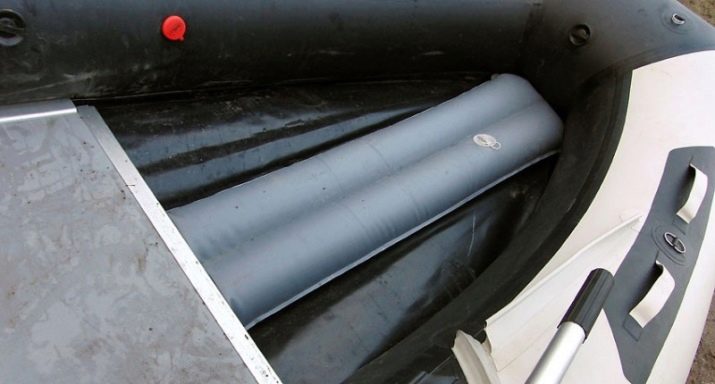
If, to improve the factory keel, it is required to strengthen it by gluing a fender in the form of a PVC tape, then a home-made product for a vessel without this part will first have to be made according to patterns, then assembled and securely fixed to the boat. When using a valve, this part bleeds air and helps to easily balance on the water without shaking, swaying and the risk of lateral movement.


How to do it yourself?
To create a device, you will need a high-quality PVC sheet, a blowtorch, scissors, glue with a moisture-resistant composition and a marker.

The workflow is divided into several steps, described below.
- The drawing can be created using a disused open keel, or by measuring the length of the boat from bow to transom, adding another 8 cm for bends.
- A blank piece of canvas of the required size is cut off in width.
- The prepared scheme is applied to the fabric in such a way that the valve coincides.
- Marking the places of the folds, you need to cut out the pattern.
- The assembly begins with the treatment of the inside of the material with a degreasing agent, after which the edges should be heated with a soldering iron and smeared with glue. The ends do not stick together completely - about 10 cm must be left.
- The valve is glued to a precisely verified place before this procedure is completed.
- The glue must dry - it takes about 10-12 hours. All this time the keel must be under pressure.
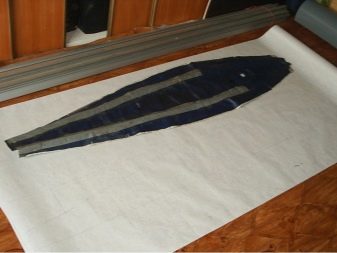

Then the homemade part is fixed to the vessel. First, you need to bleed air from it, and then glue it to the bow with one end. The second edge is fixed at the back - for these purposes, a high-quality adhesive composition for rubber is used.
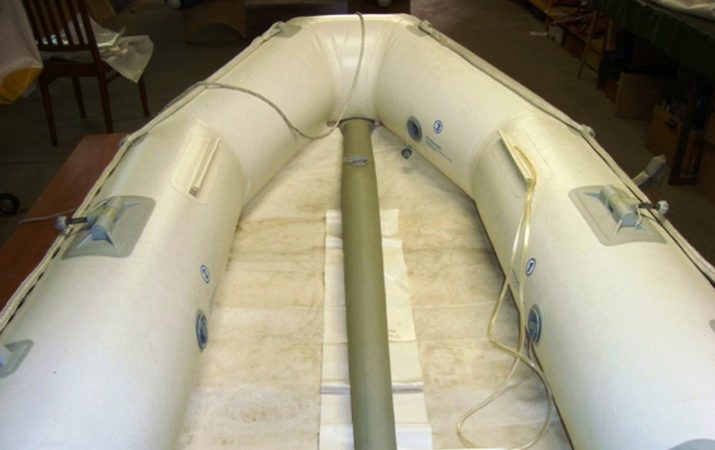
When moving quickly through the water, the product can be quickly inflated and the threat of the boat overturning is eliminated.
Production from a plastic pipe
For flat-bottomed models, the keel is best made from a plastic profile. The advantages of such a device are affordable price, strength and lightness.
The manufacturing process looks like this:
- a plastic pipe of a tetrahedral shape is used;
- two polyurethane foam sleeves are stretched over it, which are used for thermal insulation of pipes;
- from above, the device is wrapped in several layers with a shrink film, and in the places where the keel is fastened - with a wide adhesive tape;
- then the part is cut in half, and when fixing, a 0.5 m PVC pipe is inserted into its middle.
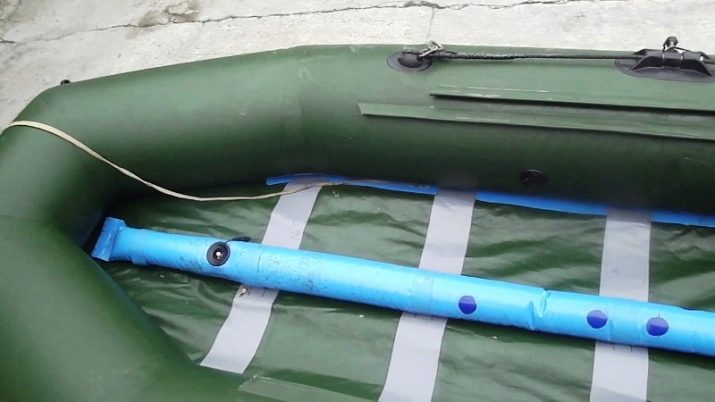
Another option involves the use of a plastic profile 2 m long and 5 cm in diameter and two corners made of the same material. The length of the cut pipe should be 6 cm shorter than the length of the boat. Rubber seals are attached to its edges, the corners are fixed with screws.
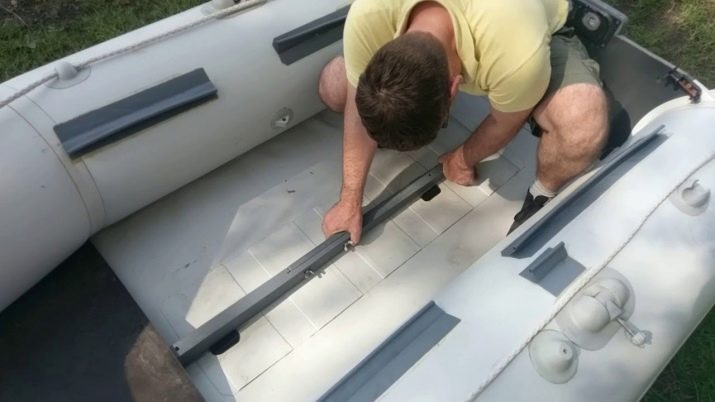
Based on the profile diameters, 2 holes must be made in the bottom. You need to install the profile in the center, place the ends of the pipe in them, and then fix it with self-tapping screws. It is important that the design runs clearly along the center line of the boat. After completing the work, be sure to check all connections for strength.
It also does not hurt to inflate the boat and see how stable it is on the water. Similar to other keeled boats, the punt uses a motor with a power not exceeding 30 hp. With.
How to make a keel on a boat with your own hands, see the next video.























